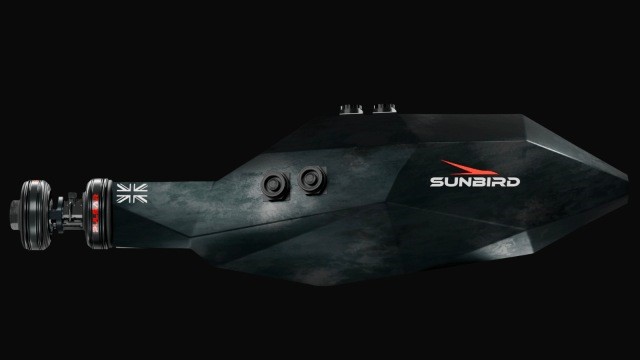Sunbird

- 12 Apr 2025
In News:
British startup Pulsar Fusion is developing Sunbird, a nuclear fusion-powered rocket that could significantly reduce travel time to outer planets like Mars and Pluto. An orbital demonstration is planned for 2027.
Key Features of Sunbird
- Maximum Speed: Up to 805,000 km/h, surpassing the Parker Solar Probe (692,000 km/h), the fastest human-made object to date.
- Travel Efficiency: Could enable missions to Pluto in just 4 years, and cut travel time to Mars by nearly 50%.
- Payload Capacity: Capable of delivering up to 2,000 kg to Mars in six months.
- Functionality: Unlike chemical rockets like SpaceX’s Starship, Sunbird would act as an interplanetary booster, attaching to spacecraft and possibly operating between charging stations in Low Earth Orbit (LEO) and Mars orbit.
About Nuclear Fusion Propulsion
Nuclear Fusion aims to replicate the process that powers stars — the fusion of atomic nuclei to release energy. Unlike nuclear fission, fusion is cleaner, offers higher energy output, and produces minimal radioactive waste.
Types of Nuclear Propulsion Systems
Propulsion Type Description
Nuclear Thermal Propulsion (NTP) Uses a nuclear reactor to heat liquid hydrogen which
turns to plasma and produces thrust. Provides high exhaust
velocity and can increase payload efficiency 2–3 times
over chemical rockets. Ground tests began in the 1950s.
Nuclear Electric Propulsion (NEP) Converts reactor heat into electricity to power ion thrusters,
which gradually reach high speeds. Components include a
compact reactor core, electric generator, heat rejection
system, and electric propulsion system. Unlike solar power,
nuclear sources ensure consistent energy beyond Mars.
Challenges in Fusion Rocket Development
- Fusion systems are currently large and heavy, posing difficulties in miniaturisation for spaceflight.
- Fusion on Earth is hard to replicate due to atmospheric constraints; space offers a more natural environment for fusion reactions.
Global Efforts and Timeline
Apart from Pulsar Fusion, companies like Helicity Space and General Atomics (backed by NASA and Lockheed Martin) are also advancing fusion-powered space propulsion systems, with testing planned around 2027.
